However, with increased competition in the global market, Google decided to launch its locally developed Chromebooks. Two of the most famous Chromebooks manufactured by Google itself are branded as Pixelbook and Pixelbook Go. Let us go through a complete breakdown of each aspect in these two Chromebooks,
Processing Power
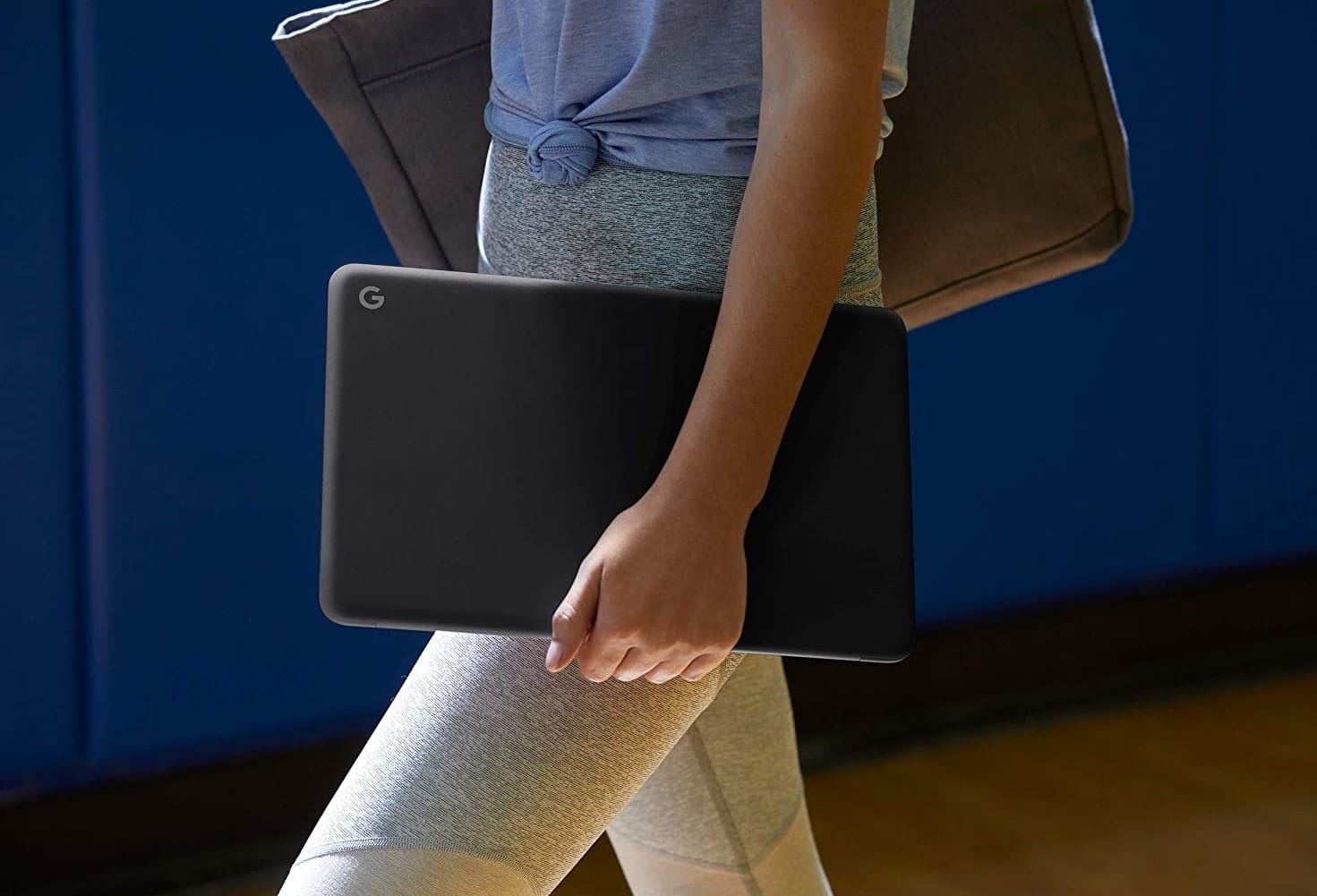
Processing Power
As Chromebooks are designed to perform under minimal loads, you cannot expect high-end processing powers in either of these devices. Pixelbook Go comes with fanless Intel processors. Pixelbook Go was introduced in multiple variants. Its entry-level model features a Core m3 processor. However, you can also have one with Core i5. This variant offers enough computing power for any day-to-day task.
Since Chrome OS allows a laptop to run seamlessly even with surprisingly light specifications, you can also use Pixelbook Go for a basic photo and video editing. Pixelbook Go can run almost every Android application available on the Google Play Store. It has 8 GB of RAM, which is more than enough for basic multitasking. You can open multiple tabs on Google Chrome without introducing any lags or delays in the system’s performance. It has been noticed that most Chromebooks in the price range of Pixelbook Go come with 4 GB RAM. Therefore, having 8 GB in RAM capacity can provide a significant boost in processing power.
Unlike Pixelbook Go, Pixelbook’s base model feature a seventh-generation Intel Core i5 processor. However, when it comes to RAM, both of these Chromebooks provide similar standards. This allows Pixelbook to pass entry-level multitasking tests easily. With an ample storage space of 128 GB, the performance of this laptop cannot be easily limited by the amount of user data stored on it. Chromebooks run Chrome OS, which is an internet-based operating system. Therefore, when you are using a Chromebook, even 128 GB of hard drive space can be more than what you need.
Similar to Pixelbook Go, Pixelbook features no cooling fans at all. It has an integrated Intel HD 615 graphics chip, which can enable you to stream high-resolution videos. A frame rate of 60 frames per second provides you with an amazingly immersive experience.
Ports & Functionality
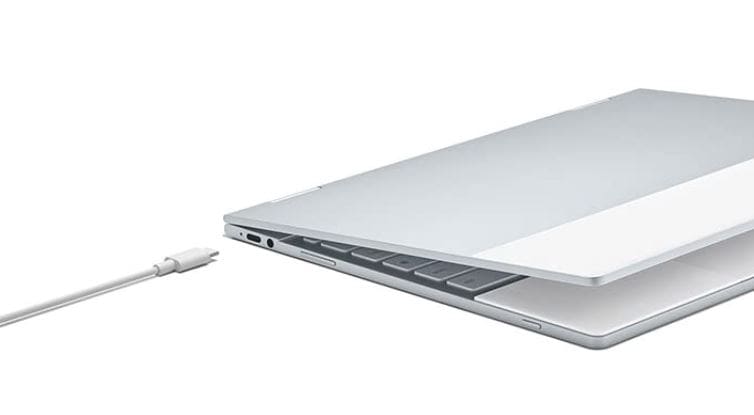
Ports & Functionality
Pixelbook Go features 2 USB-C 3.1 ports and a headphone jack. As it only comes with USB-C ports, it can be difficult for you to connect an external mouse and keyboard. However, both USB-C ports in Pixelbook Go can be used for charging and displaying output. These ports also support fast charging and can charge the battery up to 35% within half an hour. Since both of these ports can be used for charging, you can connect the adapter on either side of your Chromebook. Unfortunately, because of having limited ports for external connectivity, you will have no other option but to purchase a USB hub or a docking station.
Just like Pixelbook Go, Pixelbook comes with two USB-C ports and one audio jack. This means that it offers the same set of advantages and disadvantages in fast charging and limited connectivity options. Moreover, just as in Pixelbook Go, Pixelbook has one port on each side, with both of these ports offering dual functionality at the same time.
Its 3.5 mm headphone jack can be used for both lines in and line out. Older laptops used to have a separate port for headphones and microphone. Still, as most Chromebooks are designed with an entirely renewed software and hardware configuration, they come with a single jack to establish a bi-directional connection.
Display
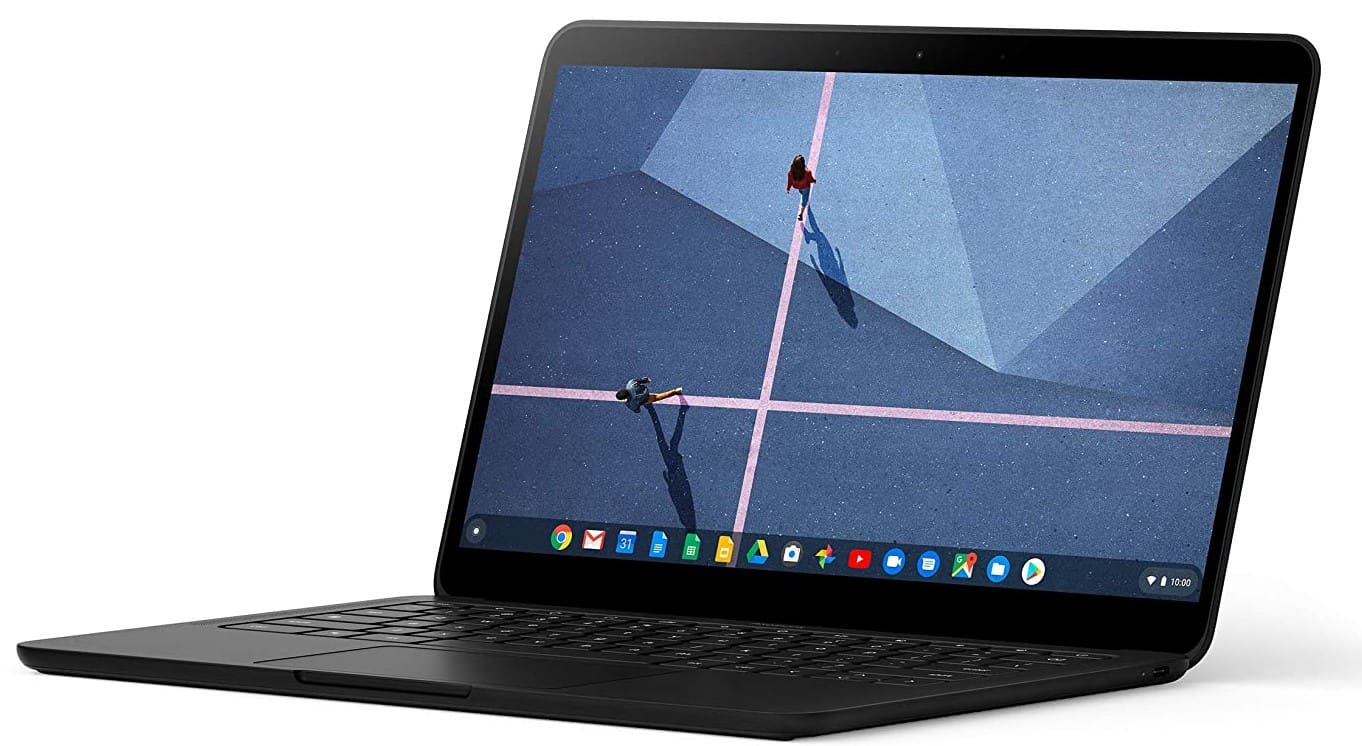
Display
Now let us compare the display in these two Chromebooks. Pixelbook Go comes with a 1080p touchscreen display. This is decent enough for any low-budget laptop. Moreover, the sharpness of its screen can be compared with some high-end laptops available in the market. This sharp display does not falter even when you are viewing HD movies or playing high-resolution video games. Pixelbook Go also has a 1080p front-facing webcam. This camera can be used to record videos up to 60 frames per second. Because of this, you can easily engage yourself in impressively smooth video conferences. Surprisingly, this webcam is even better than that of the 2019 MacBook Pro.
Now, let us go through the display of the Pixelbook. Pixelbook has a quad-HD display with a 2400 x 1600 screen resolution. This is even brighter and more colorful than the display panel in Pixelbook Go. Because of having more resolution, you can see even the tiniest details. Pixelbook features 235 PPI on its 12.3-inch screen. Pixelbook’s display effectively maintains its sharpness within 75 degrees of viewing angle.
Moreover, it can produce 117% of the sRGB spectrum. This score is comparable to that of iPad Pro and Samsung Chromebook Pro. Even though Pixelbook and Pixelbook Go differ in the quality of display they feature, both Chromebooks offer much more than what is expected in a low-budget laptop.
Keyboard & Touchpad
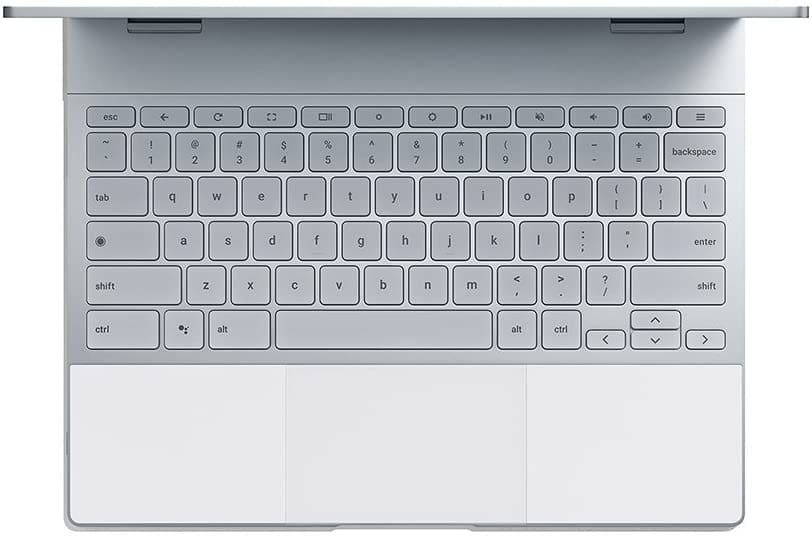
Keyboard & Touchpad
Pixelbook Go features a keyboard that is designed with comfortably spaced keys. This keyboard is one of the most impressive selling points of this laptop. It offers the best combination of comfortable and forceful feedback in its keys. This keyboard is also dimly lit in the background, but this is not easily noticeable.
You can also adjust the backlight brightness by pressing the Alt key and using screen brightness controls. This is one of those unique keyboards which provide an exquisite typing experience while being incredibly quiet. Pixelbook Go has this great keyboard, yet its touchpad is not that striking. It is respectably smooth but feels somewhat sluggish.
On the other hand, Pixelbook’s 4 x 2.6-inch edge-to-edge touchpad provides accurate tracking and reliable response to each click. This touchpad also allows you to use interactive gestures, including two-finger scrolling and three-finger swipe to see activated windows. The backlit keyboard in Pixelbook is also extremely comfortable for typing continuously for hours on end. The keys on this keyboard only travel 0.9 mm, but Google has designed them for an actuation force of 68 grams. Because of this, the keys deliver a short click whenever they are pressed. However, the arrow keys are more compact than usual, and this can be slightly annoying.
Design
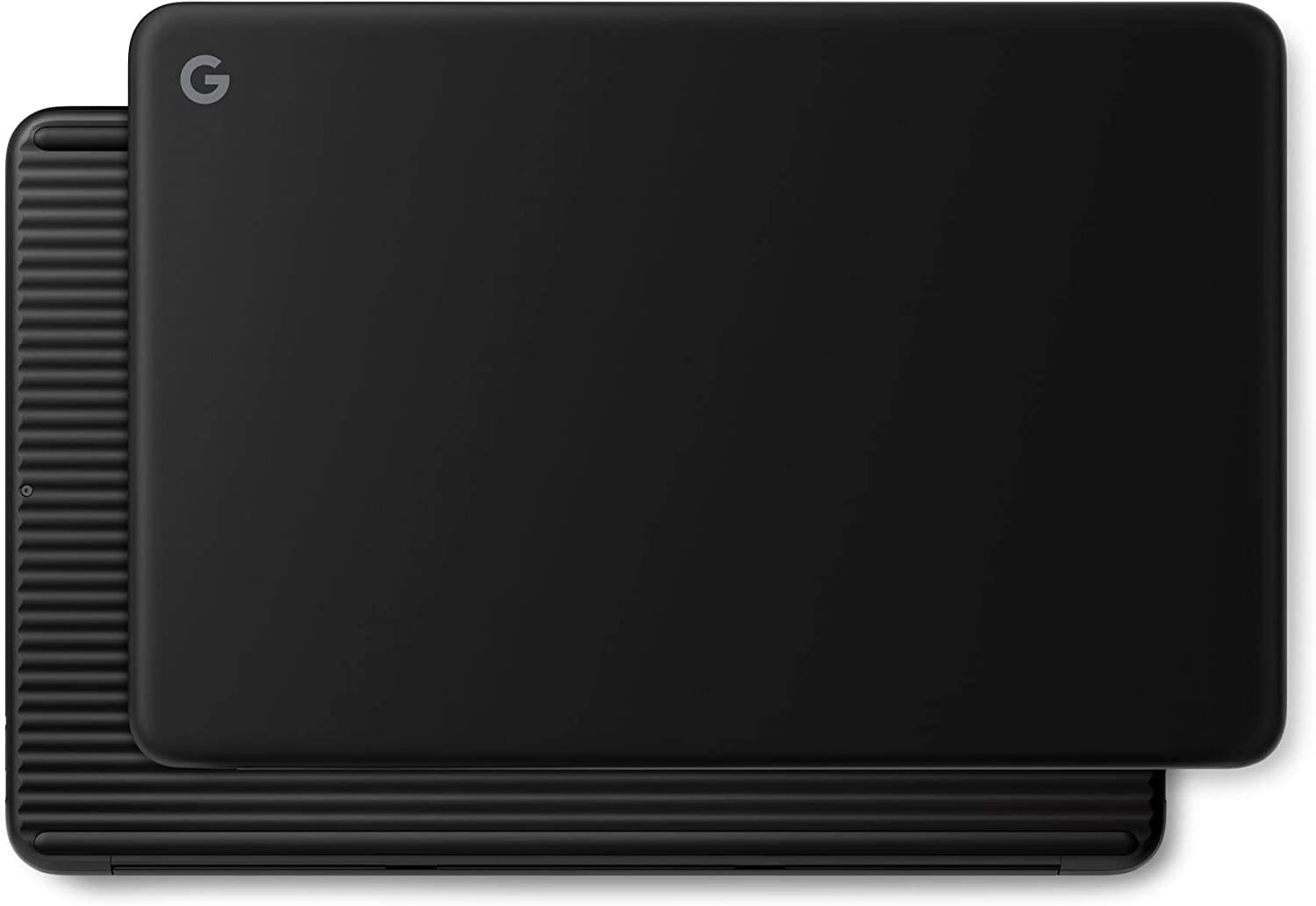
Design
Being a Chromebook, Pixelbook Go is designed to be thin and light. It measures only 0.5 inches in thickness and weighs around 2.3 pounds. It is available in two theme colors; black and pink. The main chassis of this laptop is made from a magnesium alloy and is painted in a matte texture. To introduce a firm grip on any surface, Google designed it with a rippled base. Due to this, Pixelbook Go can easily hold on to anything it is placed on, even inclined tables. Unlike others, this Chromebook is also known to have a respectably durable and resilient frame.
Having an unusual 3:2 aspect ratio, Pixelbook provides a unique overall outlook. It has an aluminum body and features silicon wrist rests under the keyboard. With only 0.4 inches of thickness, Pixelbook is even thinner than Pixelbook Go and can be carried around all day long in a small backpack. With its 360-degree hinges, its screen can be laid out flat on its back to using it as a tablet.
Price
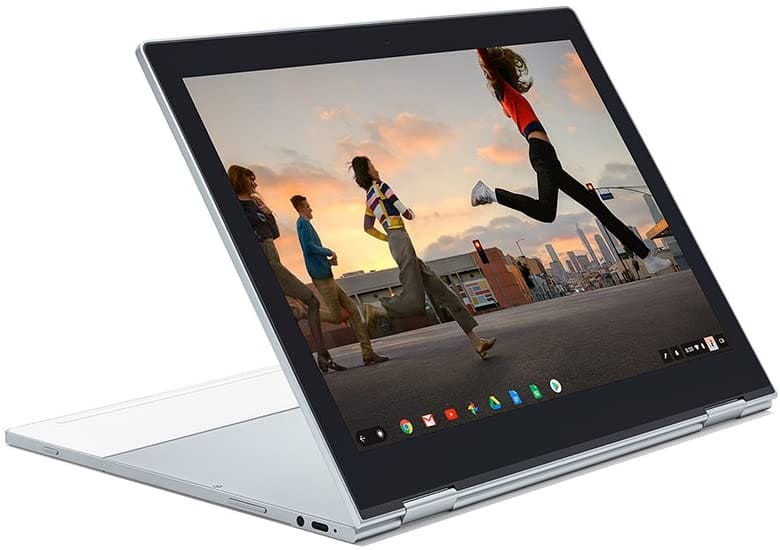
Price
The base model Pixelbook Go comes at $649, whereas Pixelbook will cost you $999. As we have discussed so far, Pixelbook comes out on top. These useful features and unique specifications do come at a price. Chromebooks are usually designed for low-end applications and day-to-day tasks on a web browser. However, with increased reliance on internet-based platforms, Chromebooks are expected to perform almost everything for a regular user. Due to this, Google had to ensure that they load both of these Chromebooks with enough power that can be used to drive the operating system seamlessly.
Compared with Chromebooks manufactured by Acer, Lenovo, Asus, HP, and many more renowned names in this industry, Pixelbook and Pixelbook Go may seem expensive. However, when their features are compared with those of other models, you can quickly realize that these Google products are indeed worth your money. When comparing prices, you must keep this in mind that Google Chromebooks are expected to perform better than those produced by other manufacturers. Google owns the Chrome OS. Therefore, all Chromebooks presented by Google itself are guaranteed to be optimized for the unique requirements of this operating system.
Conclusion
Both Pixelbook and Pixelbook Go are remarkably developed Chromebooks. Pixelbook was launched on October 30, 2017, whereas Pixelbook Go made its entry roughly two years later. Even though both these Chromebooks have strikingly similar branding names, they are pretty much distant in terms of price, RAM, processing power, screen resolution, design, and much more. If you are looking to buy a Google Chromebook, then these two certainly are among the best options available right now.
